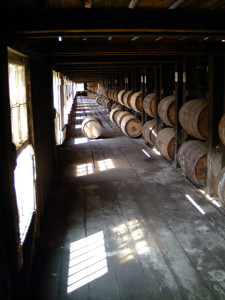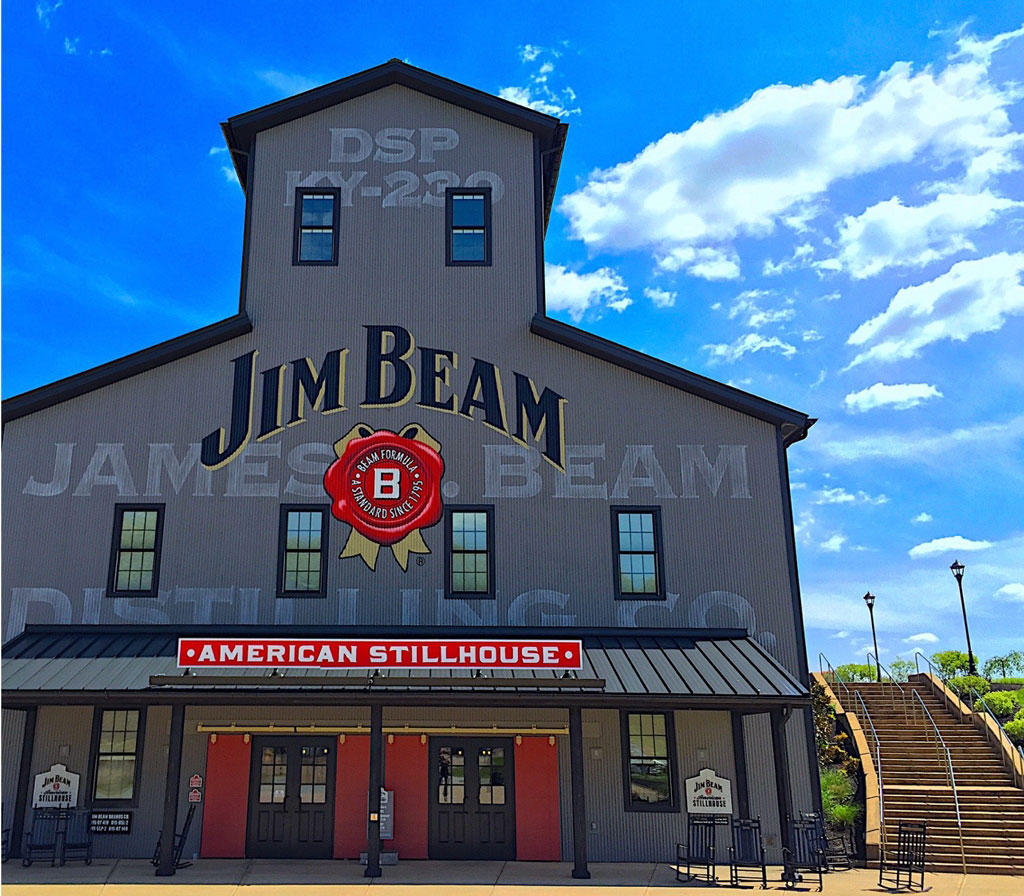By Richard Thomas

1977 this year
(Credit: Department of Travel and Tourism)
The major story in the whiskey news last week was how bourbon production in Kentucky had passed its previous high water mark, set during the 1970s. Kentucky distillers filled more barrels in 2013 than they had since 1970, the previous record year, and inventory of warehoused barrels has just topped five million for the first time since 1977. Add to this the huge boom of distillery construction in Ireland, the expansion of the industry in Scotland and the spread of the craft movement to countries that have never distilled whiskey before, and the whiskey boom looks like a truly global phenomenon.
Bull Turns Bear
Yet in the midst of these boom times, those with long memories murmur about the possibility of a whiskey bust. Whiskey-makers differ from many other industries in that they must plan their production based not on what consumers need this year, next year or the year after next, but several years into the future.
Kentucky itself in an object lesson in where aggressive expansion of production can go terribly wrong, as the 1970s saw changing tastes and a limited foreign demand turn the bourbon boom into a bourbon bust. The same decade also saw the entire Irish whiskey industry consolidated under just one company and two distilleries. The period wasn’t easy for the Scotch industry either, although the success of Glenfiddich was leading the way to the modern era of the single malt, which in turn combined with all that unwanted stock in Kentucky to give birth to the small batch and single barrel bourbons of the 1980s.
Collapse or Leveling Off?
Cautious thinkers in the whiskey trade are not unreasonable to wonder whether trying to catch up with demand might not leave them holding the bag on multi-million investments and huge amounts of unwanted stock. History and prudence suggest that flattening or scaling back on production will be necessary sooner or later, with the real question being when.
Keeping in mind general trends, my view is that eventually whiskey as a fad will sputter out, producing a sharp, sudden drop. Yet at the same time, a large scale collapse is unlikely because there will still be plenty of neat and cocktail whiskey drinkers around. So after the drop, demand will level off and remain stable for years to come.
The first reason I think that is population. When the bourbon warehouses topped five million barrels in storage in 1977, the U.S. had a population of 220 million. Today it is 317 million, an increase of 44%. If you simply assume that just the current bourbon boom in America will reach anything like the heights of the last one and in proportion, that suggests a stock of five million barrels is still well short of where the whiskey craze might take the industry in several years time. The populations of all the staple whiskey markets in North America, the Pacific and Europe are larger as well, and whiskey is generally on the upswing there too. The traditional whiskey-drinking population isn’t saturated yet.
Also, the renewal of interest in whiskey is part of two much larger trends, the rise of the global middle class and the decentralized craft movement. Brazil, China, India, South Korea and other countries now have consumers with disposable income, where they had few or none in the 1970s, and some of these are interested in good whiskey. That compounds the population increase mentioned earlier by adding still more actual and potential drinkers. The Scotch industry has already made strong inroads in these markets, and although sales growth might prove uneven over time (China seems to have leveled off in whisky consumption for now), no one really thinks the full potential of the new markets has been tapped.
Finally, the wider trend to reverse of decades of consolidation into a few bland products is now doing for whiskey what it has already done for wine and beer. Some of the new wineries and breweries failed, of course, but neither the wine or beer crazes imploded. Although the alcopop fad of the 1990s and early 2000s crashed, the concurrent vodka craze more or less leveled out and is still with us today. For whiskey, this has meant the rise of a plethora of small producers and a period of innovation and experimentation among some of the big producers.
The whiskey industry will experience its ups and downs, and the need to bet on what sales will be like several years in advance will exacerbate the downs just as they always have. Yet with the world as a whole being what it is, I have a hard time seeing the whiskey boom end in a general collapse. The boom will certainly subside, but not cave in. Whiskey has returned, and it is here to stay with us for many years to come.





Thanks for the interesting article.
Your calculation for the increase in the US population is incorrect. 317 million is 97 million more than 220 million. 97 is 44% of 220, not 69%.
Dude, check your math. Use this, since you need the help:
http://percentcalculator.com/
It’s 69.4% to be exact. You ought to know your math was wrong from the beginning, because half of 220 is 110. You think 117 is less than half?
No, Rory is right. 220 is 69% of 317, but that isn’t the same thing as the increase percentage.
Pardon my failure to carry. I have a week-old baby in the house. Corrected.
A well written piece, but one factor that you neglected to take into account is the possibility of unpredictable wildcard events that could take a serious toll on the industry. Looking back historically, WWI, Prohibition, the Great Depression and WWII all presented great challenges for the whisk(e)y industry. There is the potential for widespread war in the Middle East or Eastern Europe, or large scale natural disasters like solar flares taking down power grids around the world or an eruption of the Yellowstone Caldera. The likelihood of any of these events actually happening is quite low, but they could wreak havoc on the industry if any of them came to pass.
True! And Prohibition, the Depression and WW2 years had repercussions that arguably are still being felt in the American whiskey industry today. For the Irish and Scots, there were noticeable after-effects for decades as well.
That said, the thing about a wildcard event is that if you could predict its coming, it wouldn’t be a wildcard.